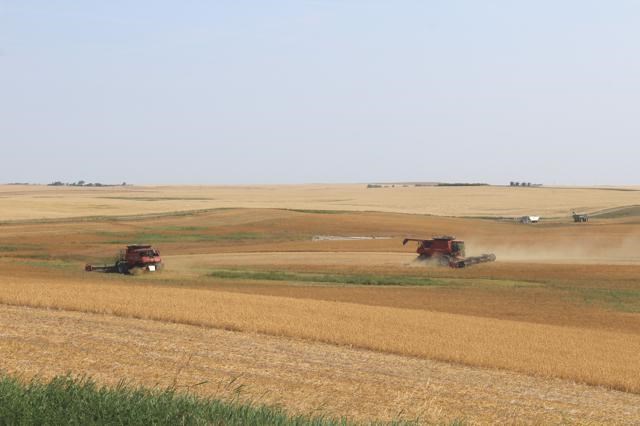Relatively warm and dry weather have allowed producers to continue with harvest operations, reported Saskatchewan Agriculture for the week ending August 28. Of this year鈥檚 crop, 24 per cent is swathed or ready to straight cut, and 26 per cent has now been combined. These figures are well ahead of the five-year and ten-year averages of 16 per cent for this time of year. Last year, 18 per cent of the crop had been combined and 32 per cent was swathed or ready to straight-cut. But across the province all 2016 crops were reporting high levels of disease in 2016.
This year, harvest progress is most advanced in the southwest region where 49 per cent of the crop is now combined. The southeast region has 37 per cent combined, the west-central region 23 percent and the east-central region 14 per cent. In the north, where there was more moisture and a cooler spring, combining is behind the average. The northeast region has four per cent in the bin, while the northwest region has five per cent of the crop now combined.
Harvest varies according to crop. Of the cereals, 98 per cent of the fall rye and winter wheat is in the bin, while 32 per cent of the durum, 26 per cent of barley, 21 per cent of triticale, 14 per cent of spring wheat and seven per cent of oats are combined. Lentils are 76 per cent, field peas are 74 per cent and mustard is 42 per cent in the bin. Harvesting for some crops is just getting underway. Canola is 10 per cent in the bin, soybeans are eight per cent done, chickpeas are seven per cent combined, canaryseed is two per cent and flax is one per cent in the bin. There are 39 per cent of canola and 25 per cent of the spring wheat and mustard swathed or ready to straight-cut.
The majority of the province received little to no rainfall this past week, with the highest rainfall for the reporting week (10 mm) reported in the Rama area. The Pierceland area still holds the highest amount of rainfall received in the province since April 1 at 543 mm.
With the warm temperatures and lack of rainfall this reporting week, topsoil moisture conditions continue to deteriorate. Across the province, topsoil moisture on cropland is rated as one per cent surplus, 26 per cent adequate, 44 per cent short and 29 per cent very short. Hay land and pasture topsoil moisture is rated as one per cent surplus, 20 per cent adequate, 37 per cent short and 42 per cent very short.




